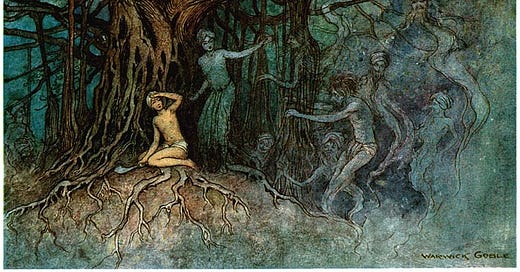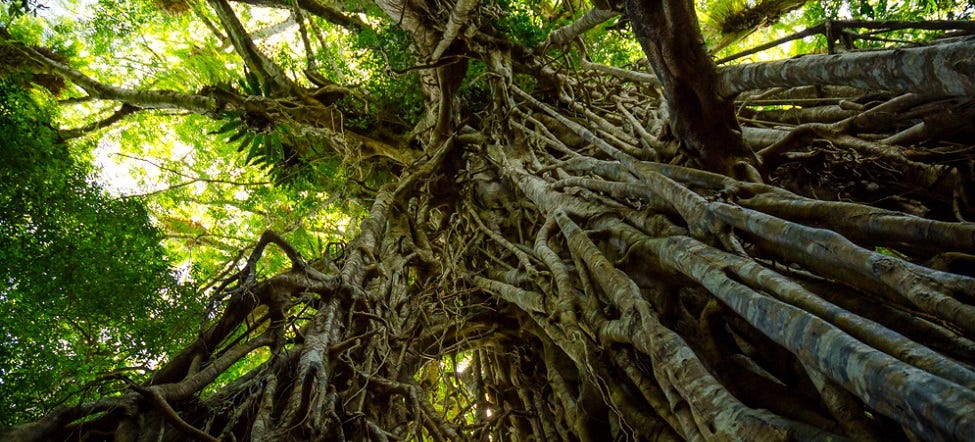No trees are home to a more motley mix of supernatural creatures than the strangler figs, whose eerie aerial roots are adept at seizing imaginations in their grip. Diverse cultures around the world say these trees shelter angels and fairies, gods and ancestral spirits, ghosts and other malevolent creatures.
There may be a biological basis to some of these beliefs. Strangler figs attract ghostly nocturnal animals such as leathery-winged bats and small primates with big eyes that reflect moonlight. In Indonesia and Malaysia, these trees are often home to small saucer-eyed primates called tarsiers (Tarsius tarsier) whose local names mean ‘spirit animal’ or ‘spirit monkey’.
Other denizens of strangler figs are decidedly less cuddly. In the folklore of the Philippines, they include giant tree demons called kapres, goblin-like duendes and the half-human, half-horse tikbalang.
On the Japanese island of Okinawa, folk tales feature impish red-haired spirits called kijimuna that live inside the hollows of strangler figs. These mischievous sprites love to play tricks on passing people, such as sitting on their chests so they can’t breathe.
In Australia, aboriginal stories warn of an altogether more fearsome fig-dweller, the yara-ma-yha-who. This manlike creature has bulging eyes and a gaping toothless maw. When hungry it will leap out of its fig tree onto an unsuspecting traveller. Its fingers and toes end in flattened discs, through which it sucks the blood of its victims.
These are just a few of the many supernatural beings that people across Africa, Asia, South America and the Pacific have said live in fig trees. As I explain in my book Gods, Wasps and Stranglers, these stories often coincide with taboos against harming fig trees — in the image above, ghosts assail a Bengali man who made the mistake of chopping a branch from a sacred strangler fig.
Whether ancient people realized it or not, by protecting strangler figs, they were ensuring the survival of many other species of plants and animals on which they depended. That’s because strangler figs are ecological linchpins. They produce figs year-round, sustaining a rich variety of birds and mammals that disperse the seeds of many other forest species. Without strangler figs, many of these animal and plant species would decline towards extinction.
So next time you see a strangler fig, fear not. The world would be a scarier place without them.
About the book: My book was published in North America as Gods, Wasps and Stranglers and in the UK as Ladders to Heaven. For a synopsis and reviews, see the link below:
Picture credits: Illustration by Warwick Goble from the 1912 illustrated edition of Folk-Tales of Bengal by Lal Behari Dey / Wikimedia Commons. Photo: A famous strangler fig called the Cathedral Fig in Queensland, Australia (James Niland / Flickr – Creative Commons).








